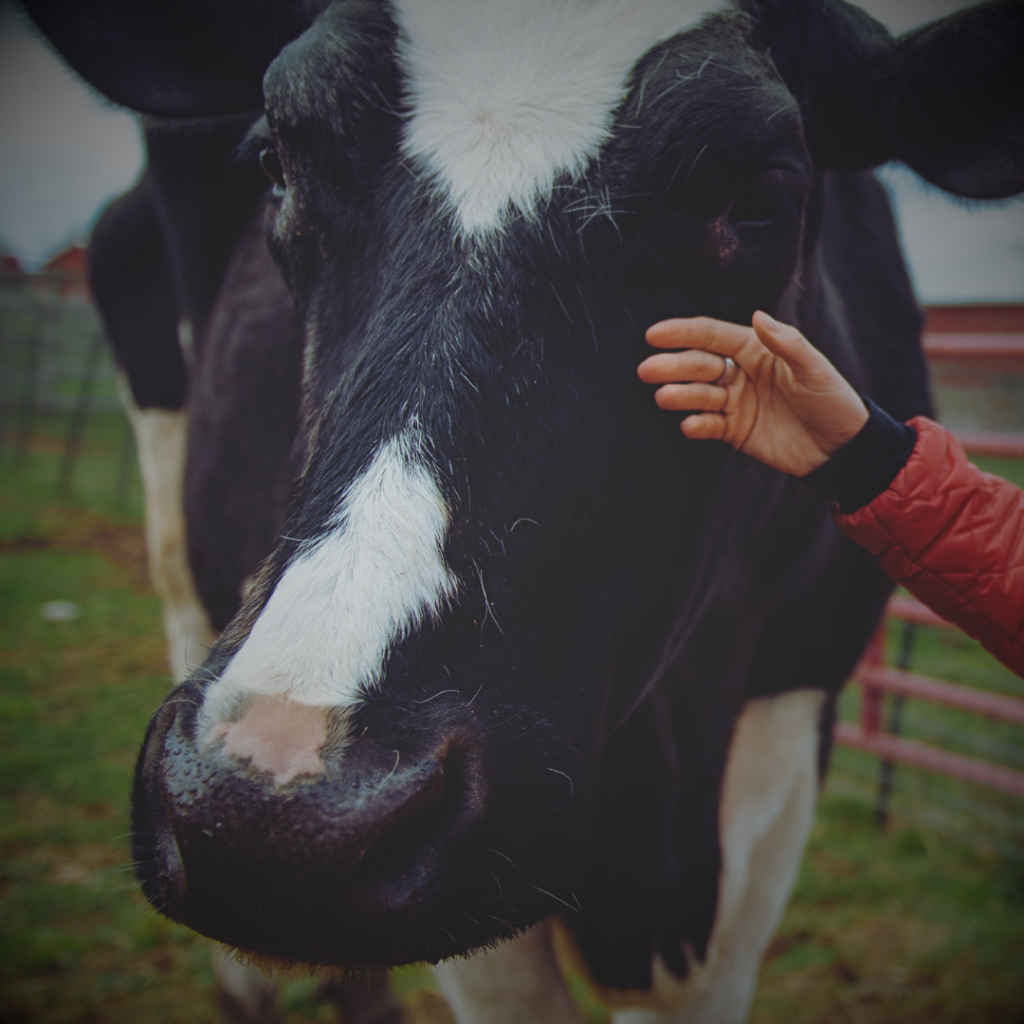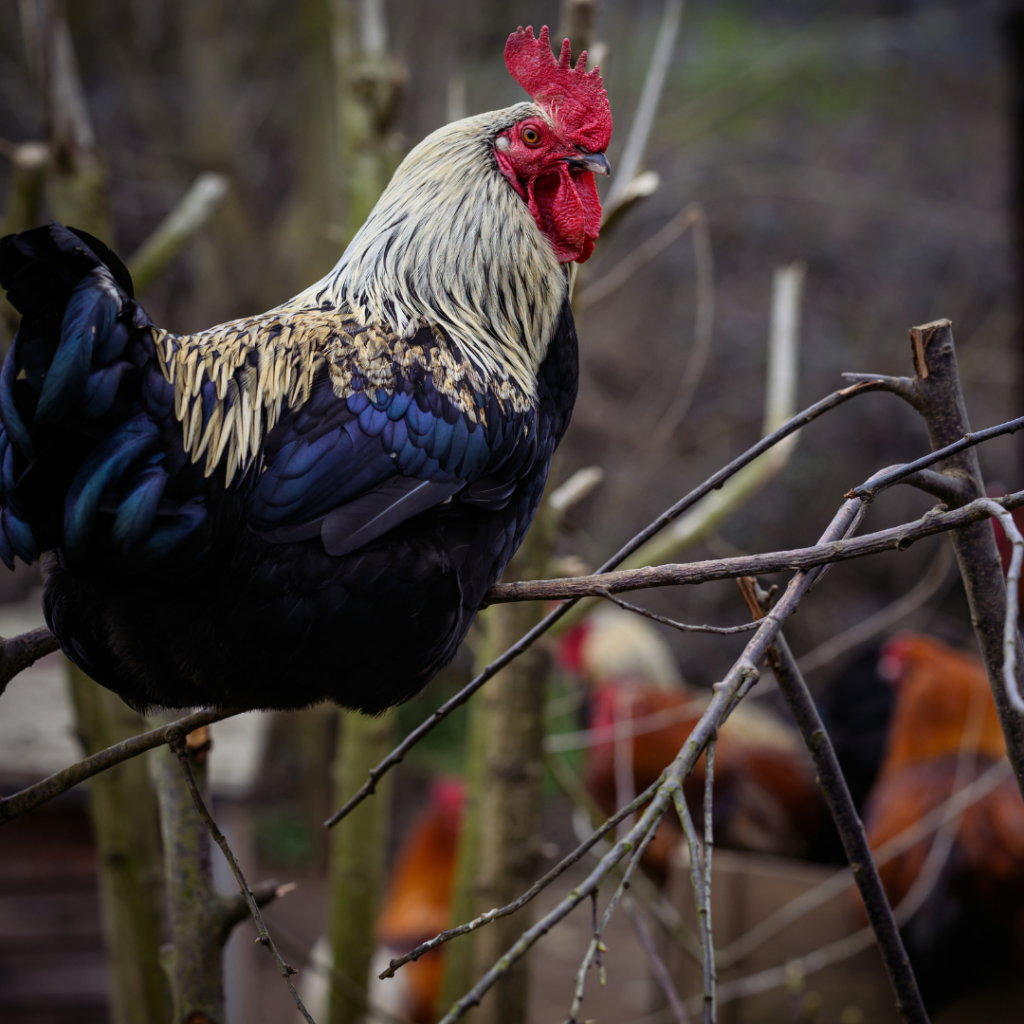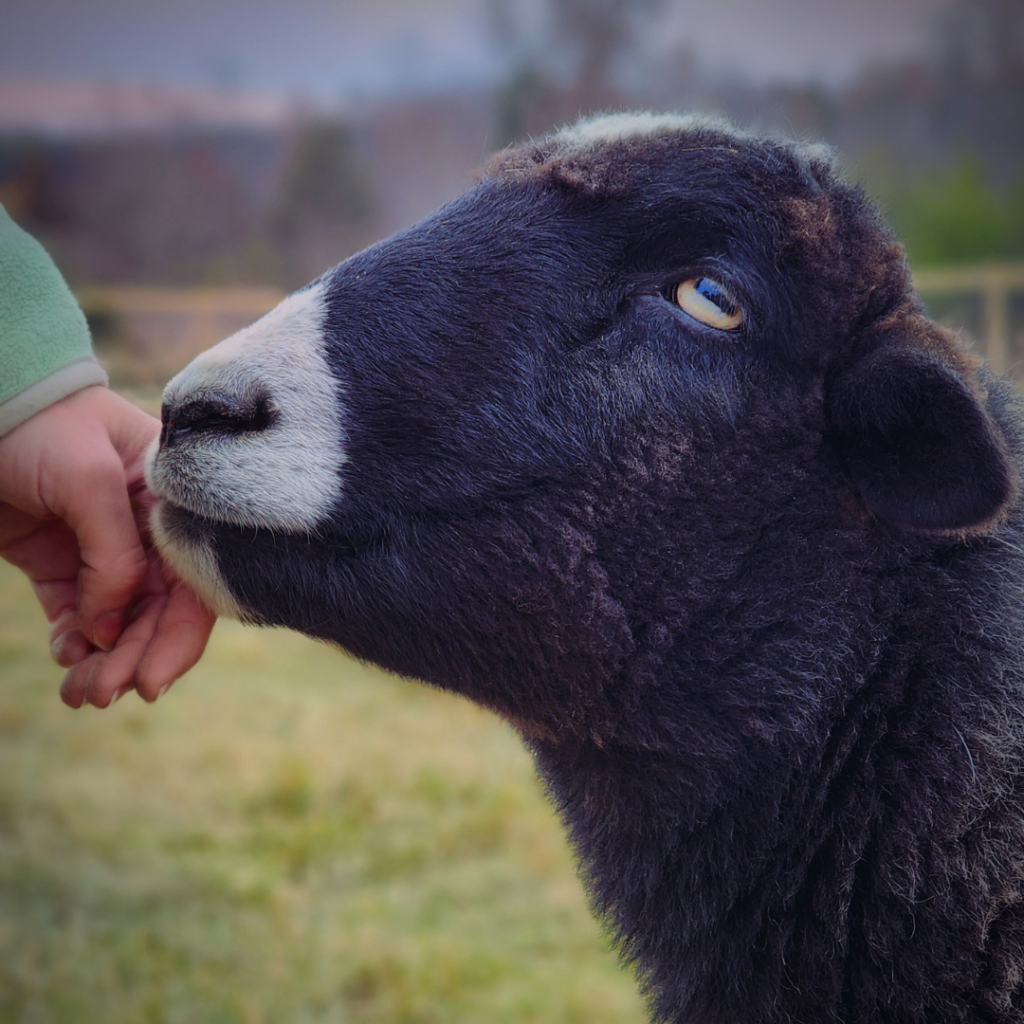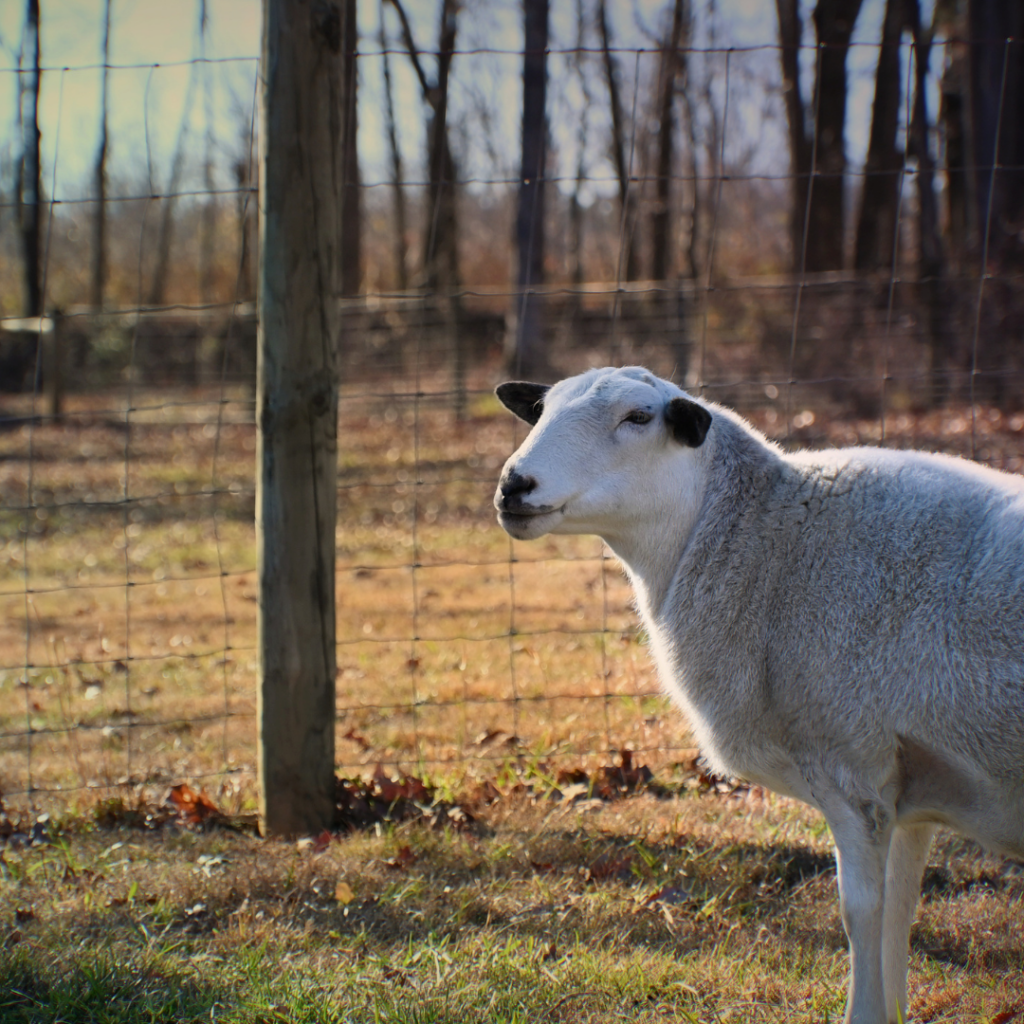
Resource Acknowledgement
The following resource was originally developed for The Open Sanctuary Project as part of Dr. Emily Tronetti’s dissertation project in pursuance of her Doctor of Education (EdD) through Antioch University and the Institute for Humane Education. Emily specializes in adult humane education and applied animal behavior, and is passionate about helping advocates and organizations cultivate compassionate coexistence through teaching about and supporting the agency and wellbeing of other animals. We are so grateful for her collaborative efforts and contributions to The Open Sanctuary Project.
This Resource is Part Six of a Fully-Downloadable Guide!
This resource is the sixth and final part of a fully-downloadable guide that was originally developed as a comprehensive resource to help sanctuary educators foster and teach about farmed animalA species or specific breed of animal that is raised by humans for the use of their bodies or what comes from their bodies. agency and consent in the context of sanctuary education and outreachAn activity or campaign to share information with the public or a specific group. Typically used in reference to an organization’s efforts to share their mission.. In our efforts to make larger resources like the fully-downloadable guide as accessible as possible in various formats, we broke it down into six individual parts/resources. If you’d like to access the fully-downloadable guide, please click here.
Reflection Questions
Throughout this resource, you will notice questions in boxes like this. To get the most out of this guide, we encourage you to pause and reflect on each question and discuss them with your colleagues. To help with this, please click here for a list of the reflection questions and space for you to share your thoughts.
Agency-Centered Sanctuary Education and Community
“Sanctuaries are spatial and relational sites of flourishing…where human–[nonhuman] animal relationships can be radically redefined, articulated, and practiced.”
Gillespie, 2021, p. 10
Formerly farmed animalsA species or specific breed of animal that is raised by humans for the use of their bodies or what comes from their bodies. can’t truly flourish if their agency is suppressed. By bringing awareness to this and teaching about how we can prioritize their agency, we, as sanctuary educators, partake in the work of radically redefining and practicing relationships with other species. We expose and challenge unjust power dynamics and begin to appreciate farmed animals “as vital participants in and contributors to our shared world” (Taylor, 2017, p. 207). By emphasizing agency and consent, sanctuary education can help people imagine more equitable and compassionate ways of coexisting with other beings. Doing so “opens up new understandings of our place as one among many” (Stanescu, 2018, p. 224). This is important because the reality is that nonhuman animals, certain groups of humans, and the planet are considered property whose agency is often overlooked or denied. Sanctuaries can play a role in dismantling this way of thinking by centering the agency of those who have been and continue to be oppressed.

“In a world in which those who are oppressed and disenfranchised are not only not expected to survive but also actively prevented from surviving, a space that asserts their right to exist, thrive, and have agency and sovereignty over their own bodies is a profoundly liberating one. … The promise and potential of Sanctuary offers hope that a different world is possible, and that creating it is within reach.”
Brown, 2019, pp. 145-148
By prioritizing the well-being of sanctuary residents and our connections to them, agency-centered sanctuary education plays a vital role in cultivating vibrant multispecies communities in which the flourishing and thriving of all beings is supported and celebrated.
Reflection Questions
Revisit the “Imagine” exercise at the beginning of this guide. How have your responses changed?
Moving Forward
Throughout this guide, we’ve explored a range of considerations related to recognizing and supporting farmed animal agency in sanctuary education. An important part of this has been acknowledging some of the complexities and challenges inherent in sanctuary settings and how they shape the educational experience for all. With this awareness, we, as sanctuary educators, can identify ways to center resident agency. This includes teaching about the role of agency and consent in interactions with other animals and how we all can participate in promoting farmed animal well-being. Agency-centered sanctuary education reveals new ways of perceiving and engaging in relationships with other animals and our communities. Critical thinking is fundamental to this.
As we strive to cultivate critical thinking within our sanctuary’s visitors, it’s vital to continue practicing it within ourselves as well. An ongoing practice of critical reflection can ensure that we consistently approach our work with openness, curiosity, and a willingness to challenge our own assumptions. It also helps us in evaluating our programs and ensuring that we’re nurturing agency while maximizing our impact within our local communities and beyond. To support you in this process, this guide has included reflection questions throughout, intended for you to reflect on and respond to in the moment. On the next page, you’ll also find a list of guiding questions that are meant to help reinforce the most important concepts shared in this resource and to guide you in your daily reflections about agency-centered sanctuary education as you move forward in your work.

Guiding Questions
These questions are meant to guide you in your daily practice as a sanctuary educator. Click here to download a graphic to save, print, or share.
- Who might be benefitting from [fill in the blank]? Who might be harmed by it?
- Whose interests am I centering? Whose interests are potentially being left out?
- How could [fill in the blank] impact the residents? How might this make them feel? What messages does it send to visitors and other sanctuary community members?
- In my role as an educator, how am I empowering farmed animals to exercise their agency? What are others learning from this?
- How am I supporting folks in promoting farmed animal agency and well-being?
- Am I holding space for folks to process and reflect on what I’m sharing?
- Have I engaged in critical reflection today? What assumptions did I make? What do I need to learn more about?
- How is agency-centered education transforming my work and its overall impact?
- What kind of world do I want to help create? How did I work towards this today?
Reflection Questions
These questions include those that were interspersed throughout the guide. To download a worksheet with space to answer these questions, please click here.
- What does education look like in your sanctuary? Does your sanctuary have a visitor program? Why or why not?
- What are your sanctuary’s missionThe stated goals and activities of an organization. An animal sanctuary’s mission is commonly focused on objectives such as animal rescue and public advocacy., vision, and values? Is education a part of your mission? If so, what are your educational objectives, goals, and outcomes? Do your programs and other approaches to education align with these goals? With the mission, vision, and values?
- Who is benefitting from your educational programming? Is there anyone who could potentially be negatively impacted or harmed by it? Is there anyone whose perspective is being left out of it altogether?
- What does agency mean to you? In what ways does your current understanding of agency impact your work as a sanctuary educator?
- How do you express your agency? How do the residents at your sanctuary express their agency?
- When greeting another human, how do you express your consent or lack thereof to physical contact? How do you tell if another human is consenting or not?
- When you read the term “mutual flourishing,” what comes to mind? What do you think it would look like to mutually flourish with farmed animals? How might this vision guide your work as a sanctuary educator?
- How has the animal care team at your sanctuary been involved with the development of onsite education programs? In what ways can they contribute to this development? What insight might they be able to offer, particularly with regard to the many environmental considerations you’ll want to make as a sanctuary educator?
- Take some time to reflect on your sanctuary’s current onsite educational programming (if applicable). What are some ways that these programs might impact resident agency and well-being?
- If a resident has either temporary or permanent disabilities, how might this impact the ways in which they express consent or non-consent? What kinds of specific accommodations can sanctuary educators make to ensure they are prioritizing the unique needs of disabled residents?
- Envision one of the residents at your sanctuary. How do they communicate consent and non-consent during interactions? What factors may influence their desire to engage with visitors on any given day?
- In what ways do you plan ahead to set resident-visitor interactions up for success? In what ways can you improve upon this?
- Have any of your sanctuary’s residents chosen roles for themselves, such as guardian or greeter? In what ways might you support them in these roles?
- What do your sanctuary’s visitors and learners expect from your educational programming? Would agency-centered sanctuary education change what they experience? How might your sanctuary set clear expectations in advance of your programming about visitor-resident interactions and experiences?
- What barriers do you and your sanctuary face in fostering agency during your educational programs and outreach events? How might you navigate these?
- Who is your audience? What do you know about them already? What else would be helpful to know about them? What kinds of questions might you ask your audience to nurture a safe and supportive learning space?
- How have your sanctuary’s residents changed since coming to sanctuary? How has your personal relationship with them transformed in the time you’ve known them? How have they changed, and how have they changed you?
- Whose stories do you choose to tell? Are certain species or individuals being left out? What are the underlying messages of the stories you share? What perceptions about farmed animal agency might they promote?
- What biases and assumptions have you had in the past about farmed animals? What might you still be holding on to? Do you have any biases about the sanctuary’s residents? About its visitors? About your community? How might these biases and assumptions impact your approach to sanctuary education?
- In what ways can you facilitate and support people in staying connected to the sanctuary and to each other?

Acknowledgments
Thank you to the following individuals for their expertise, guidance, and support during the development of this guide: Stephen Brookfield, Mary Pat Champeau, Dana McPhall, Sarah Bexell, Jennifer D’Angelo, Elan Abrell, Erin Jones, Macy Sutton, Will Lowry, Cara Frye, Jill Curry, and Anna Balser.
Emily would also like to extend a very special thanks to the Open Sanctuary Project’s Community Education Specialist, Andie Springirth, for her unwavering support and invaluable guidance and feedback throughout the development of this resource. Please check out Andie’s other helpful resources on the OSP website at www.OpenSanctuary.org!
Thank you to the many artists who created the graphics, photos, etc. shared in this guide. Images without credits were accessed via Canva.
We’d Love to Hear from You!
This guide is a living document that we plan to make continual changes to as we get feedback from sanctuary staff and volunteers who have implemented what they’ve learned from this guide into their sanctuary education practices. In our efforts to ensure this guide is as helpful as possible to sanctuary staff, volunteers, visitors, supporters, and, most importantly, the residents, we’d love to hear how this guide has impacted your work. If you have feedback, please contact us here!
Recommended Resources
A Guide to Fostering Farmed Animal Agency: Reflection Workbook | The Open Sanctuary Project
In-Person Sanctuary Educational Programming: What Are Your Options? | The Open Sanctuary Project
Virtual Sanctuary Educational Programming: What Are Your Options? | The Open Sanctuary Project
Video Example of a Consent-Based Interaction with Pearl the Sheep
Resources on Teaching Children in Sanctuary Settings | The Open Sanctuary Project
Sources
A Guide to Fostering Farmed Animal Agency in Sanctuary Education | The Open Sanctuary Project
Fostering Critical Thinking at Your Animal Sanctuary | The Open Sanctuary Project
Beasts of Burden: Animal and Disability Liberation | Sunaura Taylor








